What happens when you hook an England fan up to biometric sensors during a game?

Football is often heralded as the peak of sporting emotion, a game that elicits passion amongst its followers, especially at the international level. But what if we could measure the passion and emotions of supporters as they watched a game? What if we could empirically show which parts of the game engaged the viewer and caused the most emotion?
It was with these questions in mind that we ran a biometric study into the England vs. Czech Republic final Group D game.
To do this we hooked our football-loving guinea pig, Rob, up to a set of biometric sensors for eye tracking, facial expression analysis and galvanic skin response. After a bribe of some beer and pizza, he sat down to watch the game, while the sensors did their thing of measuring his behavioural and emotional responses to the match unfolding before him.
So, what were the results?
England had an entertaining first half… The second half? Not so much!
Most of the pundits agreed following the game that England impressed with dynamic play in the first 30 minutes but after that, their performance dwindled, and they played a much slower game to ensure they came away with the win. It’s not for me to judge, but the second half could almost be described as boring.
What’s interesting is that the biometric data backs up what the pundits are saying! Rob was twice as engaged in the first half than he was in the second.
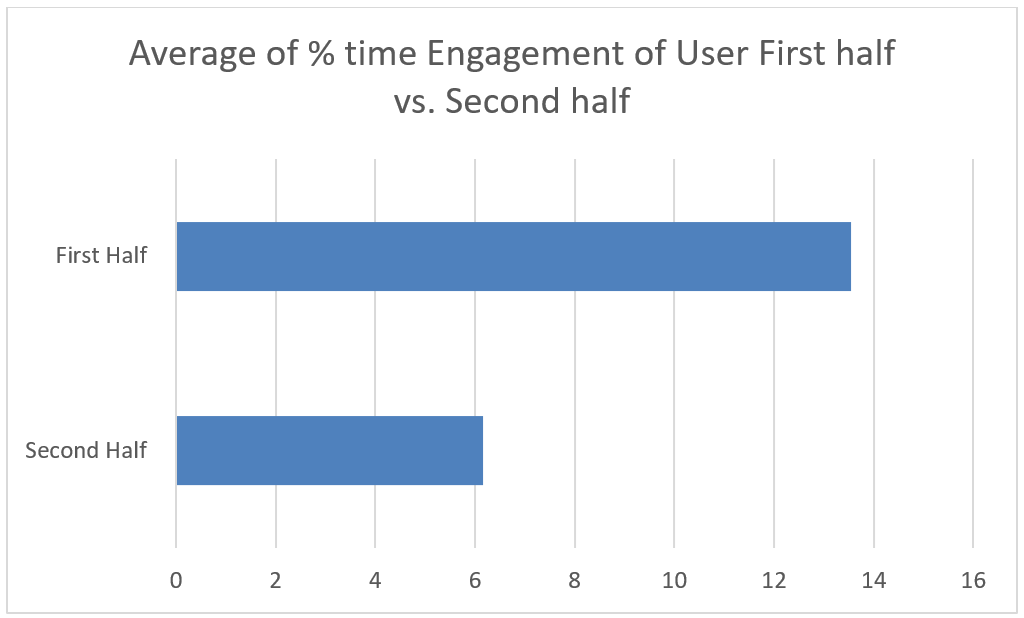
By dividing up the match into segments, you can see how Rob’s engagement waned during the match. The first 15 mins had the goal, and the first half was more exciting generally, but at the end of the first and through most of the second there is a clear lull in engagement. If it wasn’t for the slight uptick in the closing minutes with renewed English pressure he may have switched over to Death in Paradise!
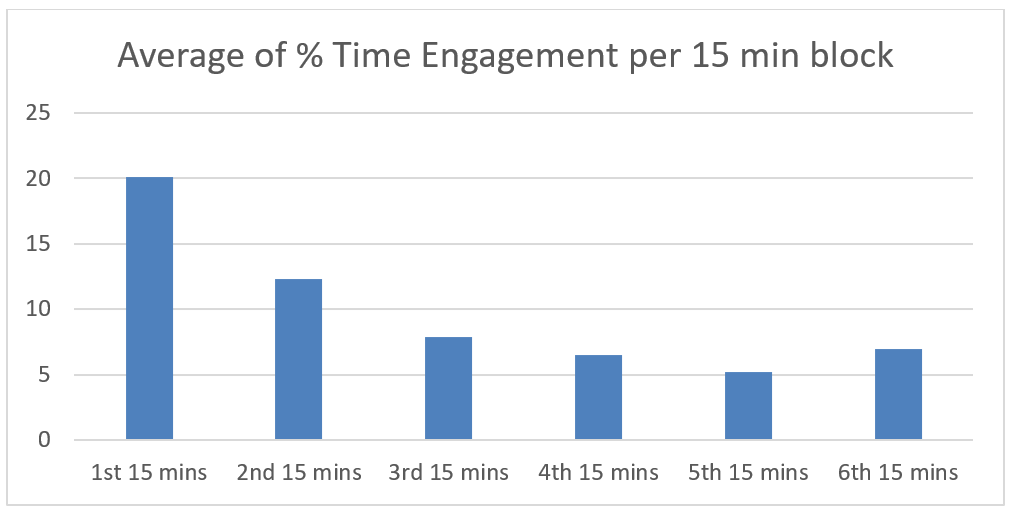
The emotions driving the engagement were mainly joy, surprise and a little contempt. Joy from smiling, surprise through the mouth opening and contempt, a smirk or wry smile. All are positive in this user’s profile and in a game setting show several reactions. Think a round open mouth combined with an inhale of breath for a chance on goal or smirk for a refereeing decision or good passage of play.
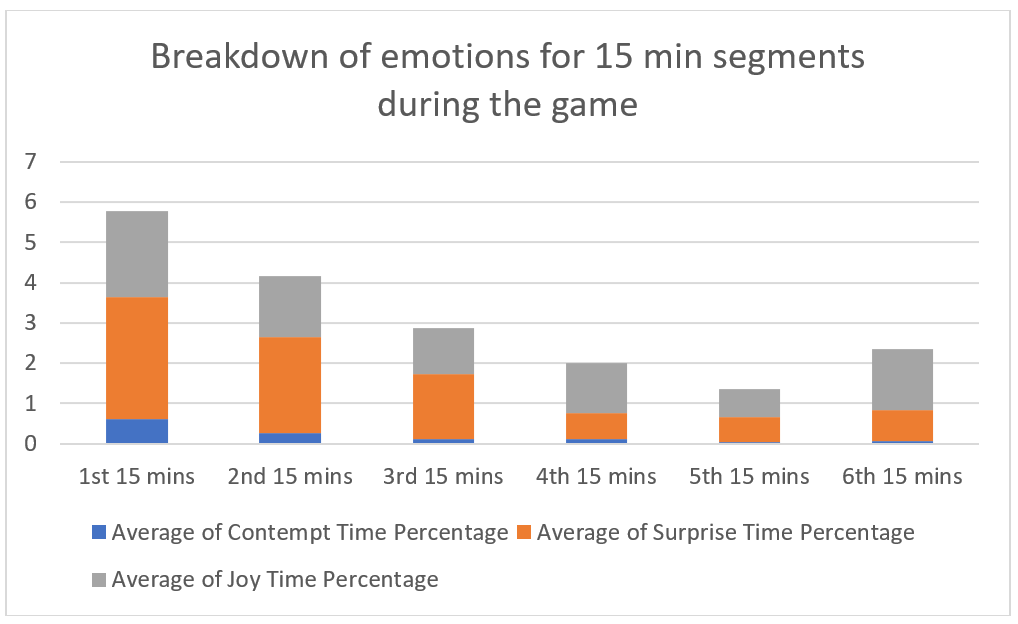
The drop in surprise reaction, in particular, reveals there were fewer chances in the second half, which was a key driver in the waning engagement as the game went on. But across the board, it is clear Rob became disinterested in the game through the second half and was only slightly lifted by some late changes by England in the closing stages.
Analysis of a goal – Measuring genuine excitement.
The video below shows what is happening as Rob is watching the build-up and scoring of the goal. What stood out as interesting is the eye-tracking behaviour. Rob spent his time looking for passing or shooting opportunities, rather than following the ball and importantly, there is a multi-phase emotional and physiological response to the build-up and scoring of a goal.
Physiologically, Rob’s excitement builds (measured through GSR) and it peaks just after the goal has been scored (due to the delayed GSR reaction). Emotionally, Rob immediately expresses joy that England have scored. However, this facial expression changes to a wry smile and nod that the goal was a good effort and well played, which may well be a socialised response from watching a lot of football.
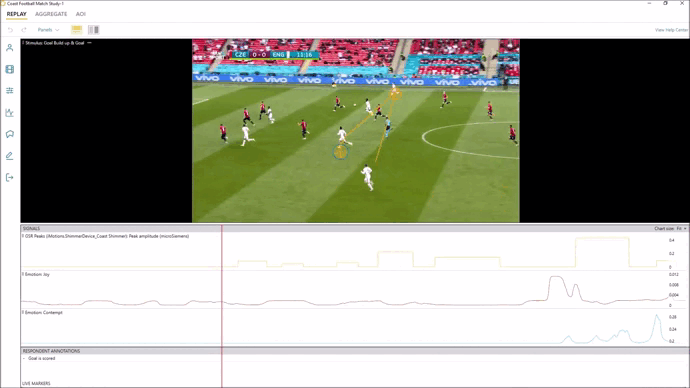
Match Key Moments – What were the reactions?
While the goal was a key moment in the game and drove a clear spike in excitement for Rob, it wasn’t the goal that led to the largest GSR response. This plaudit goes to the Czech corner and attempt on goal that almost led to an equaliser.
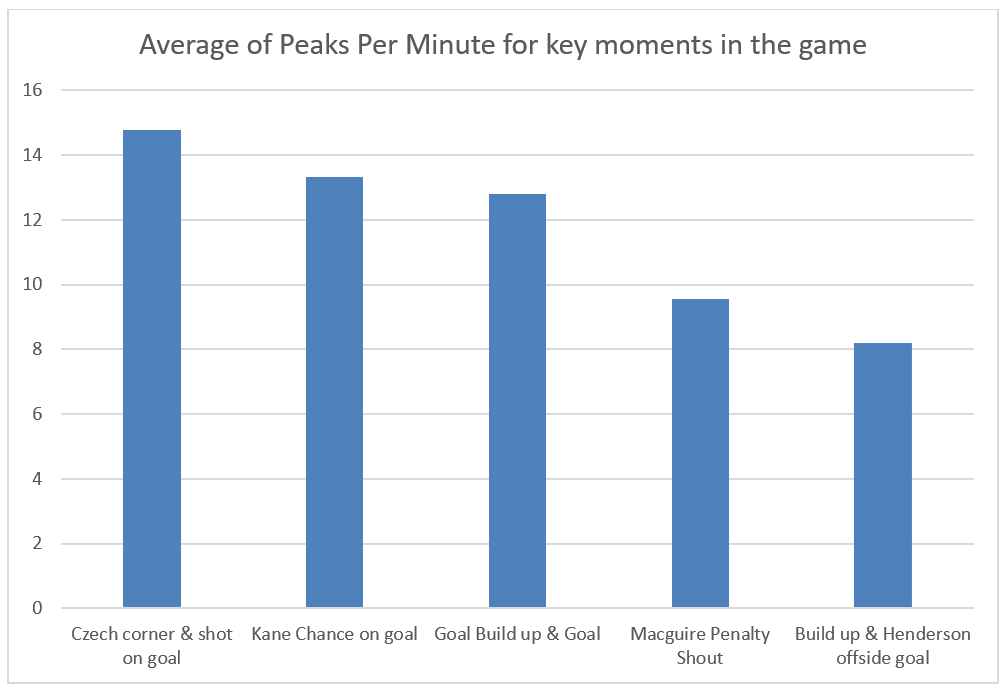
GSR doesn’t give us a positive or negative result, only the arousal, but we can clearly see that there is a strong response to the Czech chance, more likely to be fear than excitement. Fear that the lead would be lost and the game equalised.
The build-up to the goal and Kane’s failed chance on goal also both caused a lot of excitement, but Henderson’s offside “goal” did not. This is because as an experienced football fan Rob was quickly able to identify that Henderson was offside, so got less excited about the opportunity (he also expressed this vocally at the moment the ball went in the net).
Subconscious behaviours: Just how long does a viewer spend checking the score?
Through eye-tracking, we were also able to identify how many times Rob checked the score or the time left in the game. It is higher than we first thought, in that Rob checked the score about once per minute, and the game time twice per minute. Interestingly despite the slower performance in the second half, he checked the clock about the same number of times, although he did check the score a little less.
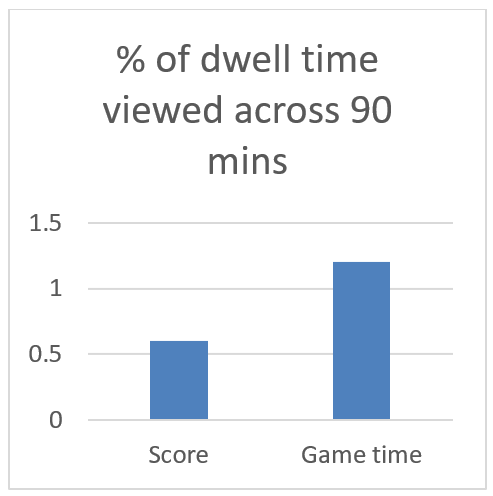
Rob spent a little over 1% of the total game time checking the clock and around half that checking the score.
So, what have we learned?
- That the tempo of play, the creation of chances and the dynamism of the supported team has a real impact on the emotions being expressed and the excitement felt by the viewer. Through measuring this, we can add weight to the pundit’s views of the game.
- Reactions to goals are complex and multifaceted. There is a clear physiological response as the play builds and the chance of a shot on goal increases, this is followed by a peak in excitement at the point of the goal going in. But from a facial expression perspective, there is an initial positive reaction, but then more of a learned, socialised behaviour to evaluate the goal and give it a seal of approval.
- Quite obviously goal chances cause the greatest amount of physiological (more sub-conscious) arousal or excitement, but in this instance, it was the fear of losing a lead, rather than gaining or building one that caused a greater response.
- Viewers check the score and clock remarkably frequently during a game, which could pose potential for advertising or messaging placement.
Hopefully, you’ve found this an interesting read, the aim was to show how a viewer responds to a game of football and show how we can apply scientific method to understand how our users behave and react. The findings are fascinating but imagine if this had been a match against Germany in a knockout round, rather than a group match where England were essentially safely through!
It has also aimed to demonstrate the versatility of biometric testing. At Coast, we use it extensively for the testing of websites, but this study shows it can be used for a broader set of stimuli, particularly in the realms of sports, films, television, and advertising. If you are interested in understanding how users react to your content, why not get in touch?
